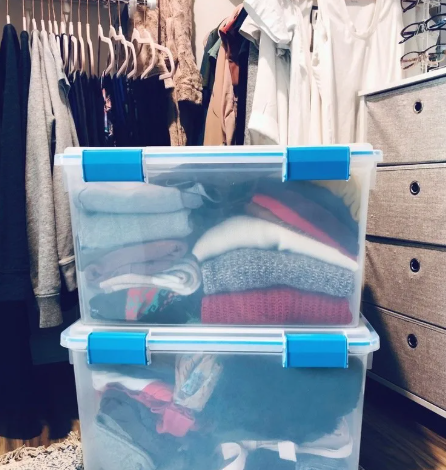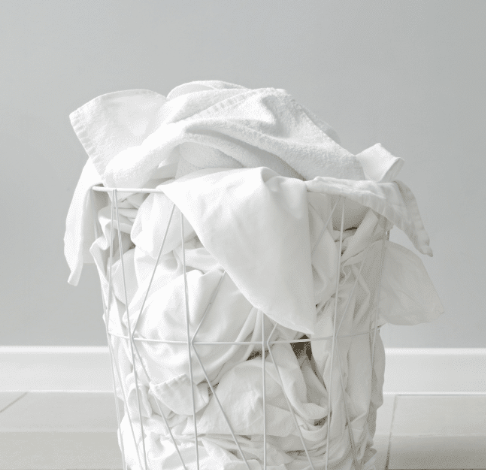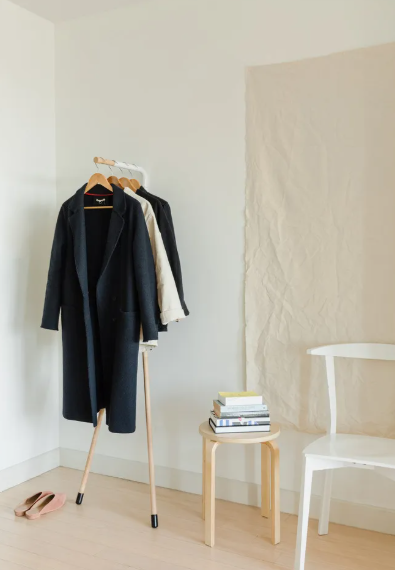
How to Store Your Summer Clothes During the Winter
As winter approaches, it’s time to put away your summer wardrobe and prepare it for the upcoming warmer months. Properly storing your summer clothes during the winter is crucial not only to make room in your closet but also to ensure that your clothes remain in excellent condition for the next season. Without the right storage methods, your garments can suffer from wrinkles, odors, fabric damage, or even pest infestations.
By following the correct steps, you can keep your clothes fresh, protected, and ready to wear when the sun comes back out.
Why Proper Storage is Important for Seasonal Clothes
Storing clothes for the off-season is more than just making space in your closet. Clothes that are not properly packed away can end up with wrinkles, musty smells, or even permanent damage. Over time, improper storage can also attract pests or cause the fabric to degrade.
Here’s why storing your clothes properly matters:
- Fabric preservation: Materials like cotton, linen, and silk can deteriorate if exposed to excessive heat, humidity, or light. Storing them in a controlled environment prevents these issues.
- Pest prevention: Clothes stored in damp, unsealed areas are at risk of attracting insects like moths or silverfish. These pests can damage the fabric by chewing holes or leaving stains.
Taking the time to store your clothes the right way can save you from fabric damage and extend the life of your favorite summer garments.
Clean Your Clothes Before Storing
Before packing away your clothes for the season, ensure they are thoroughly clean. Stains, oils, or dirt left on fabric can set over time, making them harder to remove later. Additionally, food particles or sweat can attract pests such as moths, which could damage your clothes.
Follow these steps to properly clean your garments before storage:
- Wash everything: Even if your clothes look clean, always wash them before storing. Use a gentle detergent and make sure they’re completely dry to avoid mildew buildup.
- Remove stains: Treat any unnoticed stains before storing your clothes. Food, makeup, or drink stains can become permanent if not addressed in time.
- Eliminate odors: If there are any lingering smells, deal with them before storage. Natural solutions like vinegar, baking soda, or sunlight can help freshen up garments.
Choosing the Right Storage Containers
The way you store your summer clothes can directly affect how they look when you take them out again. The right container will help protect your clothes from dust, moisture, and pests.
Here are some effective storage options for your seasonal wardrobe:
- Vacuum-sealed bags: These are excellent for saving space, especially for items like cotton and synthetic fabrics. However, avoid vacuum-sealing delicate fabrics such as silk or linen, as the compression can cause permanent wrinkles.
- Airtight plastic containers: Great for protecting clothes from dust and moisture. Use acid-free tissue paper between layers of clothes to prevent yellowing or damage. Clear containers are helpful for identifying contents without opening them.
- Garment bags: For delicate fabrics like dresses and blouses, breathable garment bags made of cotton or linen allow for air circulation and prevent musty odors. Avoid using plastic bags, as they can trap moisture and lead to mildew.
Protecting Your Clothes from Pests
Pests, such as moths and carpet beetles, are drawn to natural fibers like wool, cotton, and linen. To avoid this, it’s essential to use natural repellents when storing your clothes.
Here are some ways to protect your clothes from pests:
- Sachets with natural repellents: Lavender, cedar, and rosemary are excellent natural repellents. Place these sachets in your storage bins or closets to keep insects at bay.
- Cedar wood: Cedar is an effective repellent for moths and carpet beetles. Cedar blocks or chips can be placed in storage containers or closets to ward off pests. Refresh cedar periodically by lightly sanding it to release its natural oils.
- Clean storage areas: Ensure that your storage areas are clean before placing clothes inside. Dusting and vacuuming regularly will help eliminate pests’ hiding spots.
Storing Delicate Fabrics and Accessories
Some items, such as silk, chiffon, and summer accessories like hats and swimsuits, require extra care during storage. Delicate fabrics and accessories can be damaged easily if not stored correctly.
- Padded hangers: For delicate items like silk dresses or lightweight blouses, use padded hangers to maintain their shape. Avoid hanging heavy items like sweaters, which could stretch.
- Acid-free tissue paper: When storing delicate fabrics, wrap them in acid-free tissue paper. This helps prevent yellowing, creases, and fabric damage.
- Proper storage for accessories: Store hats in boxes that help maintain their shape. Swimsuits should be cleaned and completely dry before being stored in breathable bags.
Maximizing Closet Space for the Off-Season
One of the main reasons to store summer clothes during winter is to free up space for your cold-weather wardrobe. However, inefficient storage solutions can take up as much space as the items themselves.
Here are a few space-saving tips to maximize your closet’s capacity:
- Vacuum-sealed bags: For non-delicate items like t-shirts, shorts, and dresses, vacuum-sealing can help save a lot of space.
- Under-bed storage: If your closet is too full, under-bed storage containers can provide a great solution. These containers keep your clothes organized and accessible.
- Shelves and bins: Use labeled bins to separate different types of clothing. This way, you’ll be able to easily find what you need when the warmer months return.
Where and How to Store Your Clothes
Where you store your clothes is just as important as how you store them. The ideal storage location should be cool, dry, and dark to preserve your clothes and prevent damage.
Consider these storage locations:
- Closet storage: A closet is often the most convenient place for items you may need to access. Ensure it’s clean and dry to prevent issues with mildew or pests.
- Under-bed storage: If your closet is already full, under-bed storage is an excellent solution for keeping clothes organized and out of sight.
- Attics and basements: Avoid storing clothes in attics or basements unless they’re temperature-controlled. These areas are often too humid or too cold, which can cause mold or fabric damage.
Ensure your storage areas are well-ventilated, and check your clothes periodically for freshness and potential damage.
By following these storage tips, you can ensure that your summer wardrobe remains in great condition and ready for the next season.






